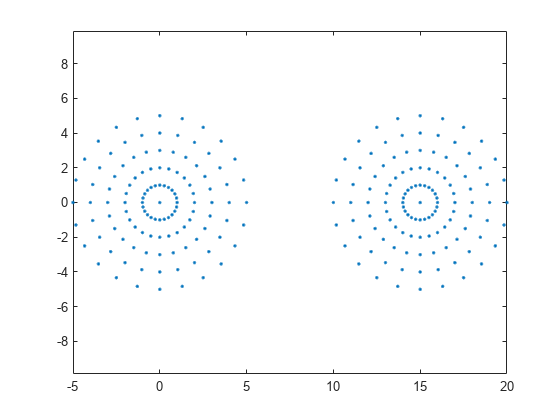alphaSpectrum
Alpha values giving distinct alpha shapes
Syntax
Description
a = alphaSpectrum(shp)a is in descending sorted order. Each element in
a represents a value of the alpha radius that results in a
distinct shape. The length of a is equal to the number of unique
shapes. Values of alpha that lie between the values in a do not
produce unique alpha shapes.
Examples
Input Arguments
Output Arguments
Version History
Introduced in R2014b

